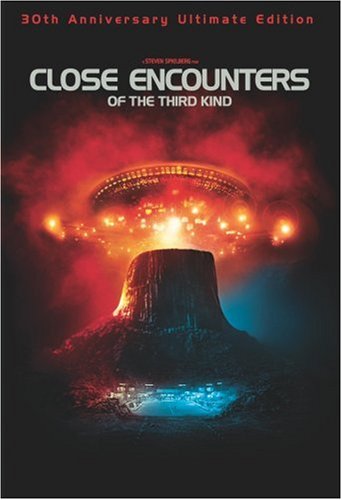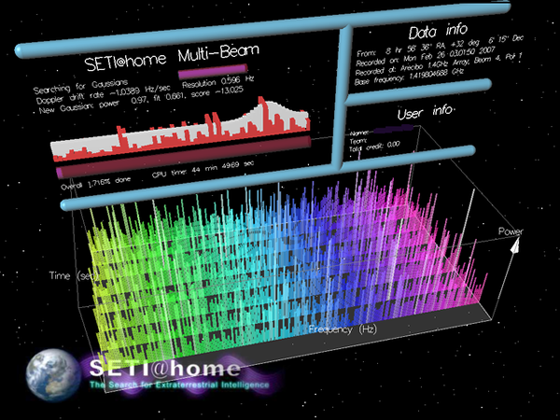Encounter of the Third Kind
Today, an encounter of the third kind. The University of Houston's College of Engineering presents this series about the machines that make our civilization run, and the people whose ingenuity created them.

Close Encounters of the Third Kind
(30th Anniversary Ultimate Edition) (1977)
Many of us may remember Spielberg's classic science fiction film "Close Encounters of the Third Kind." In one scene, Richard Dreyfuss's character communicates with aliens from another world through the music tones ... and who can forget the mashed-potato sculpture scene?

Allen Hynek [Wikipedia/cropped]
Ever wondered why the encounter is of the third kind? Allen Hynek, an astronomical consultant for the U.S. Air Force and chairman of Northwestern's astronomy department explained this in his 1972 book. Hynek developed a systematic classification of various encounters with unidentified flying objects.
A close encounter occurs within 500 feet of an observer. In a close encounter of the first kind a UFO is seen but no interaction with the environment is observed. In the second kind, physical effects are observed like vegetation being pressed down or tree branches being broken. In the third kind, the presence of "occupants" in or about the UFO is reported.
Now, most of us are skeptical about UFOs and alien visitors from other planets — but the subject raises some very interesting questions: Is it possible to detect intelligent life from other planets? In 1961, Frank Drake came up with the list of factors that one would need to know to predict the number of civilizations in our Milky Way galaxy.
The Drake equation is essentially a multiplication of these factors. It starts with the average rate of star formation per year in our galaxy times the fraction of the stars that have planets. This is multiplied by the number of planets that we believe can and do support intelligent life. We must also consider the fraction of civilizations that are able to release detectable signs of existence and the length of time taken.
Now, keep in mind that even if or when we detect intelligent life, it may be many many light years away... meaning that we are indeed witnessing the past. Are they still there? So, a more relevant question is whether we will ever come in close contact with intelligent life from other planets? And that depends on the overlap between our civilization's lifetime and theirs and the means of transportation. We are talking about very very low probabilities.

Search for Extraterrestrial Intelligence (SETI) [Screen shot of the screensaver for SETI@home/Wikipedia]
And if we ever do come in contact, we may want to be the visitors and not the visited species. Our own history can attest to this preferred scenario. So, let our science and technologies advance and our thirst for exploration grow. And one day we may become the bigheaded visitors that we often imagined visiting us.
I'm Haleh Ardebili at the University of Houston, where we're interested in the way inventive minds work.
(Theme music)
Notes and References:
http://www.seti.org/drakeequation
http://www.universetoday.com/30811/a-new-drake-equation-other-life-not-likely-to-be-intelligent/
Note: Many Experts believe that Drake Equation is too simplistic and requires further modifications to improve its accuracy.
For example, a "contact cross-section" should be considered between Extraterrestrial Intelligent Life and contemporary human society. Colonization and subsequent expansion of sites may need to be included in this equation. Also, the formation of intelligent life can be linked to the age of the universe. More time may be required for intelligent life to evolve on other planets.
This episode first aired on April 1, 2013.